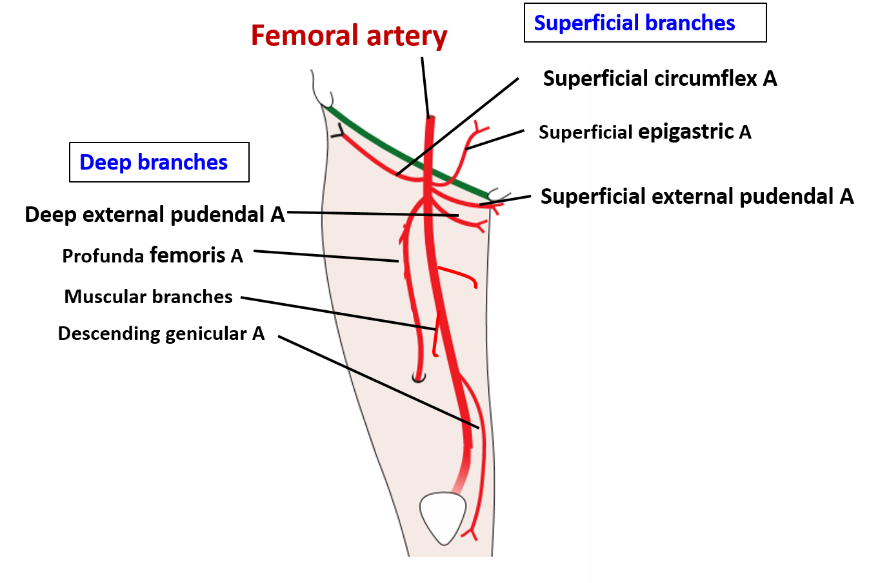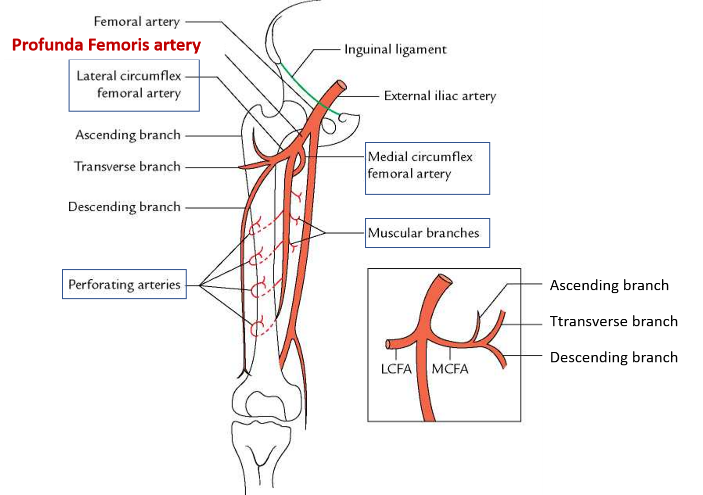Advertisements
What is the origin and course of Femoral artery?
Origin: Femoral artery is continuation of external iliac artery at midinguinal point.
Course:
- It enters the thigh by passing behind the inguinal ligament.
- It passes through the femoral triangle and the adductor canal.
- It ends at the last osseoaponeurotic opening in adductur magnus and continues as popliteal artery.
Enumerate the branches of Femoral artery.
- Superficial branches:
- Superficial epigastric
- Superficial circumflex iliac
- Superficial external pudendal
- Deep branches:
- Deep external pudendal
- Profunda femoris
- Medial circumflex femoral
- Lateral circumflex femoral
- Muscular branches
- Descending genicular

Enumerate the branches of Profunda Femoris artery.
- Medial circumflex artery
- Lateral circumflex artery
- Muscular branches
- Three perforating arteries
- It ends by piercing adductor magnus as fourth perforating artery

Applied Aspects
During surgery on thigh, ligation of the femoral artery
During surgery on thigh, the femoral artery can be ligated in the adductor/subsartorial canal. Collateral circulation is maintained by the anastomosis between the following arteries:
– Descending branch of lateral circumflex femoral artery ( branch of profunda femoris artery).
– Descending genicular artery (branch of femoral artery)
– Genicular branches of popliteal artery
Pulsations of femoral artery
Pulsations of femoral artery can be felt in the femoral triangle just below the midinguinal point against the head of femur. In coarctation of aorta, feeble or no pulsation is felt.
Femoral artery used for embalming
Femoral artery is commonly used for infusion of embalming fluids to preserve the cadavers.

Nyc content and easy
very good and easy to understand